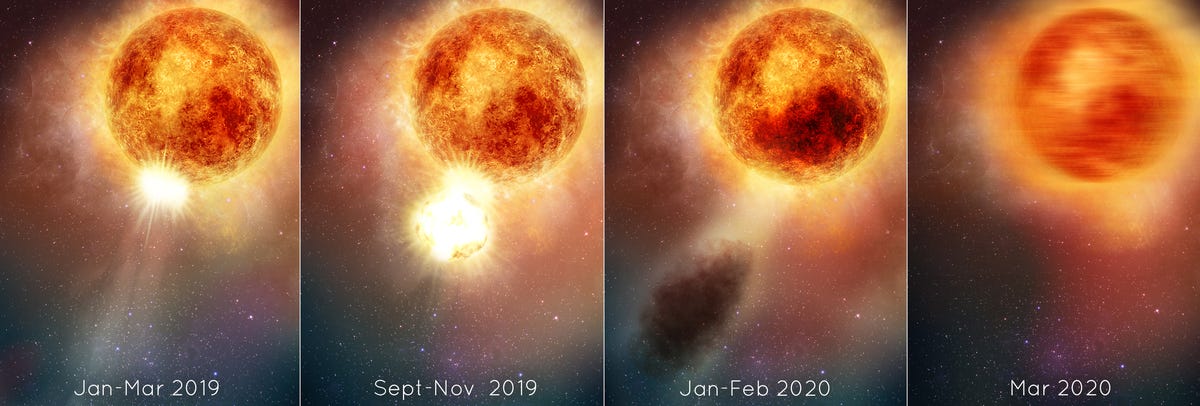Massive red supergiant star Betelgeuse is at the end of its life span, at least on cosmic timescales, but the gargantuan fireball is going out kicking and screaming.
Astronomers used NASA’s Hubble Space Telescope and other observatories to determine that the senior star actually blew off part of its surface in 2019.
“We’ve never before seen a huge mass ejection of the surface of a star. We are left with something going on that we don’t completely understand,” said Andrea Dupree from the Harvard and Smithsonian Center for Astrophysics in a statement. “It’s a totally new phenomenon that we can observe directly and resolve surface details with Hubble. We’re watching stellar evolution in real time.”
Dupree is first author on a paper in the Astrophysical Journal outlining the blast and its fallout.
The swollen late-stage star has a mind-boggling diameter of about a billion miles, which means if you replaced our sun with Betelgeuse, the star would extend all the way out to Jupiter’s orbit. At almost 10 million years old, it’s twice the age of our sun and could go out in a supernova explosion some time in the next 100,000 years.

This illustration plots changes in the brightness of the red supergiant star Betelgeuse, following the titanic mass ejection of a large piece of its visible surface. The escaping material cooled to form a cloud of dust that temporarily made the star look dimmer as seen from Earth.
NASA, ESA, Elizabeth Wheatley (STScI)
The researchers refer to the 2019 event as a “surface mass ejection,” or SME, which is somewhat similar to the coronal mass ejections we see erupt from our own sun’s outer atmosphere, often causing bright auroras and radio disruptions on Earth. However, the eruption from Betelgeuse ejected about 400 billion times as much mass as an average CME.
Blowing off a hunk of its top created a dust cloud around the star, which was also left with a large cool spot on its surface. As a result, Betelgeuse dimmed significantly, enough that even amateur astronomers could notice the change. For months in 2019 and 2020 there was speculation that the dimming might be the precursor to the star going supernova.
It’s now more clear that the dimming was actually evidence of a smaller explosion that had already occurred, and Dupree cautions that while dramatic, shooting a chunk of itself into space doesn’t mean the end of Betelgeuse is nigh. In fact, the star is slowly recovering from the blast.
“Betelgeuse continues doing some very unusual things right now; the interior is sort of bouncing,” Dupree says.
Whenever Betelgeuse finally does blow itself completely to pieces, it’ll be visible from Earth, even in the daytime sky.
Up next, astronomers will continue to examine data from the explosion to get a more detailed picture of what happened. Researchers may even try to use NASA’s brand-new James Webb Space Telescope to try to capture images of the ejected supergiant star chunk racing across the cosmos.

